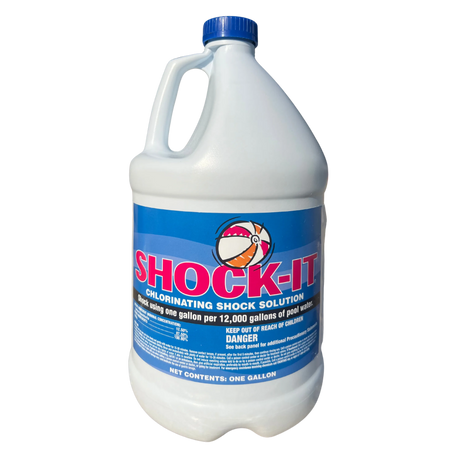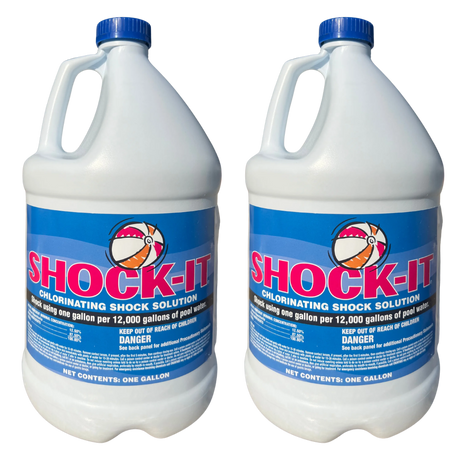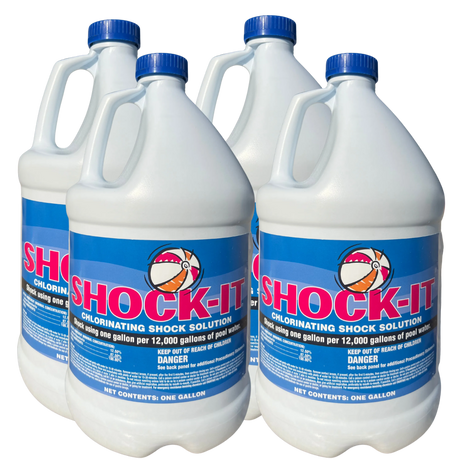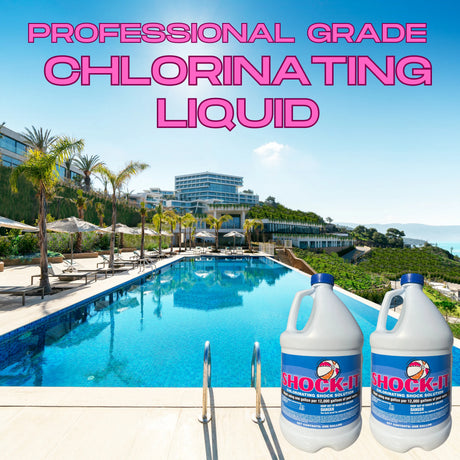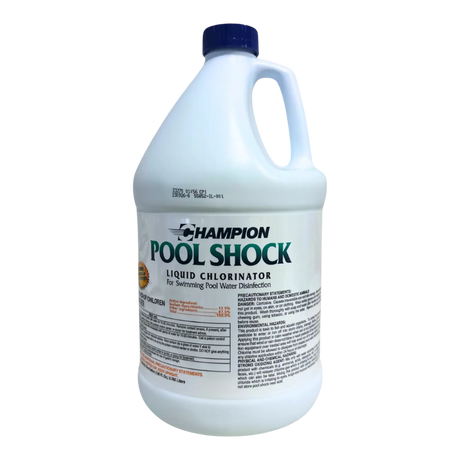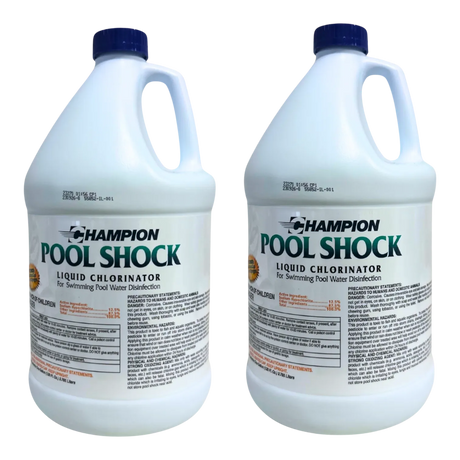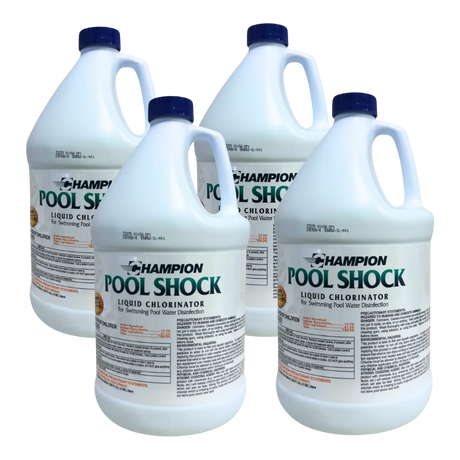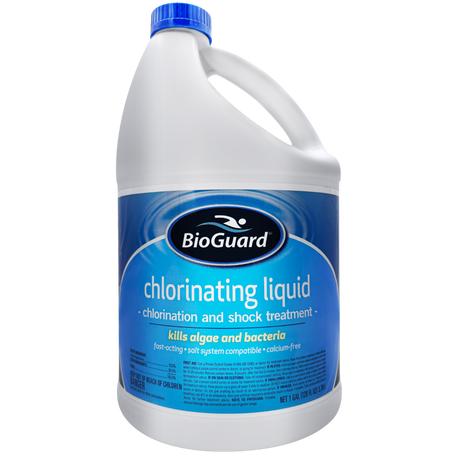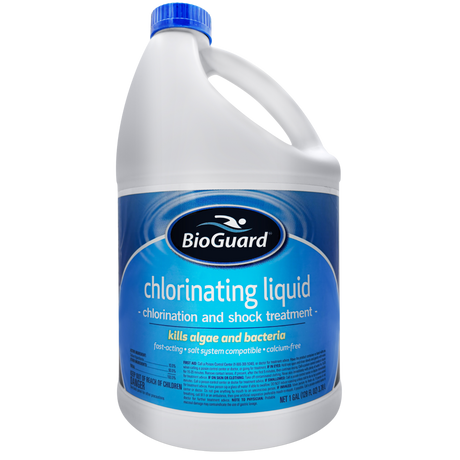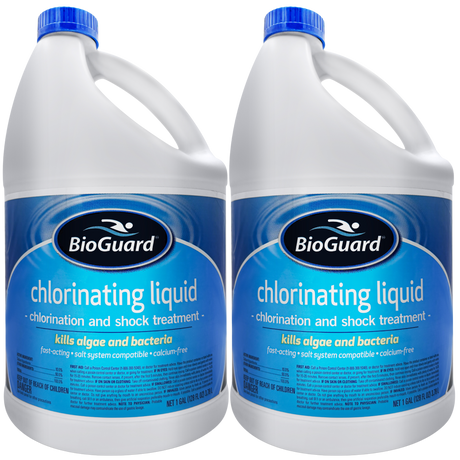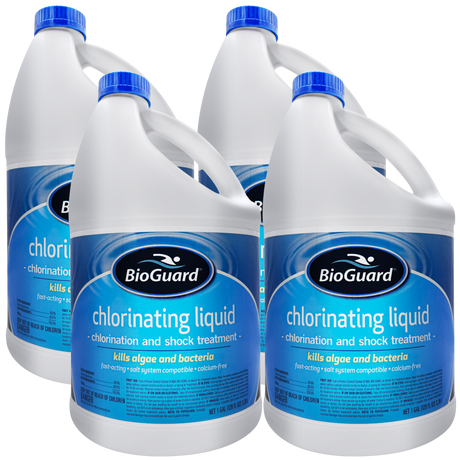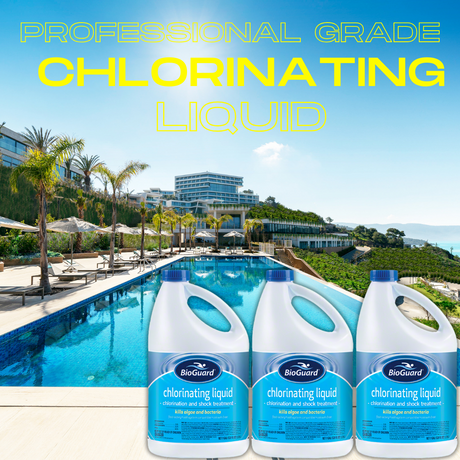Shock-It
Shock-It Liquid Chlorine 12.5% Pool Shock
Chlorine (Liquid)
From $1799Unit price /UnavailableChampion
Champion Pool Shock 12.5% Liquid Chlorinator
Chlorine (Liquid)
From $1800Unit price /Unavailable
Frequently Asked Questions
How much liquid chlorine is needed to shock a swimming pool?
The amount of liquid chlorine needed to shock a pool depends on the pool's size and current chlorine levels.
For one-time shock treatments to remove algae and other organic contaminants, a dosage of around 1.5 to 2 gallons per 10,000 gallons of water should do the trick.
For weekly shock treatments using liquid chlorine, you should be adding around 1 gallon of liquid shock per 10,000 gallons, per week. During hoter weather or higher bather load, you may need to shock more frequently.
For one-time shock treatments to remove algae and other organic contaminants, a dosage of around 1.5 to 2 gallons per 10,000 gallons of water should do the trick.
For weekly shock treatments using liquid chlorine, you should be adding around 1 gallon of liquid shock per 10,000 gallons, per week. During hoter weather or higher bather load, you may need to shock more frequently.
How do I shock a pool with liquid chlorine?
To shock a pool with liquid chlorine, first ensure the pump is running. Pour the recommended amount of liquid chlorine evenly around the pool's perimeter, especially around deep areas. Let the pump circulate the water for at least 8 hours, and avoid swimming until chlorine levels return to a safe range, ideally between 1-3 ppm.
Remember: Keeping your pH level balanced is crucial to ensure that the liquid chlorine is able to do its job! As pH level rises, all forms of chlorine become less and less effective.
Remember: Keeping your pH level balanced is crucial to ensure that the liquid chlorine is able to do its job! As pH level rises, all forms of chlorine become less and less effective.
How much liquid shock should I add to a 15,000-gallon pool?
For a 15,000-gallon pool, you’ll generally need 1.5 to 2 gallons of liquid chlorine. This may vary depending on chlorine levels, algae presence, and other factors. A pool shock calculator can help determine the exact amount based on your pool's specific needs.
Liquid vs. Powder Pool Shock: Which is Better?
Liquid chlorine acts fast and is easy to apply, but it needs to be stored safely due to its high strength. Powdered shock (usually calcium hypochlorite) dissolves slowly, making it ideal for gradual chlorine addition. The choice depends on your pool's needs, convenience, and budget.
Frequently Asked Questions
How much liquid chlorine is needed to shock a swimming pool?
The amount of liquid chlorine needed to shock a pool depends on the pool's size and current chlorine levels.
For one-time shock treatments to remove algae and other organic contaminants, a dosage of around 1.5 to 2 gallons per 10,000 gallons of water should do the trick.
For weekly shock treatments using liquid chlorine, you should be adding around 1 gallon of liquid shock per 10,000 gallons, per week. During hoter weather or higher bather load, you may need to shock more frequently.
For one-time shock treatments to remove algae and other organic contaminants, a dosage of around 1.5 to 2 gallons per 10,000 gallons of water should do the trick.
For weekly shock treatments using liquid chlorine, you should be adding around 1 gallon of liquid shock per 10,000 gallons, per week. During hoter weather or higher bather load, you may need to shock more frequently.
How do I shock a pool with liquid chlorine?
To shock a pool with liquid chlorine, first ensure the pump is running. Pour the recommended amount of liquid chlorine evenly around the pool's perimeter, especially around deep areas. Let the pump circulate the water for at least 8 hours, and avoid swimming until chlorine levels return to a safe range, ideally between 1-3 ppm.
Remember: Keeping your pH level balanced is crucial to ensure that the liquid chlorine is able to do its job! As pH level rises, all forms of chlorine become less and less effective.
Remember: Keeping your pH level balanced is crucial to ensure that the liquid chlorine is able to do its job! As pH level rises, all forms of chlorine become less and less effective.
How much liquid shock should I add to a 15,000-gallon pool?
For a 15,000-gallon pool, you’ll generally need 1.5 to 2 gallons of liquid chlorine. This may vary depending on chlorine levels, algae presence, and other factors. A pool shock calculator can help determine the exact amount based on your pool's specific needs.
Liquid vs. Powder Pool Shock: Which is Better?
Liquid chlorine acts fast and is easy to apply, but it needs to be stored safely due to its high strength. Powdered shock (usually calcium hypochlorite) dissolves slowly, making it ideal for gradual chlorine addition. The choice depends on your pool's needs, convenience, and budget.

